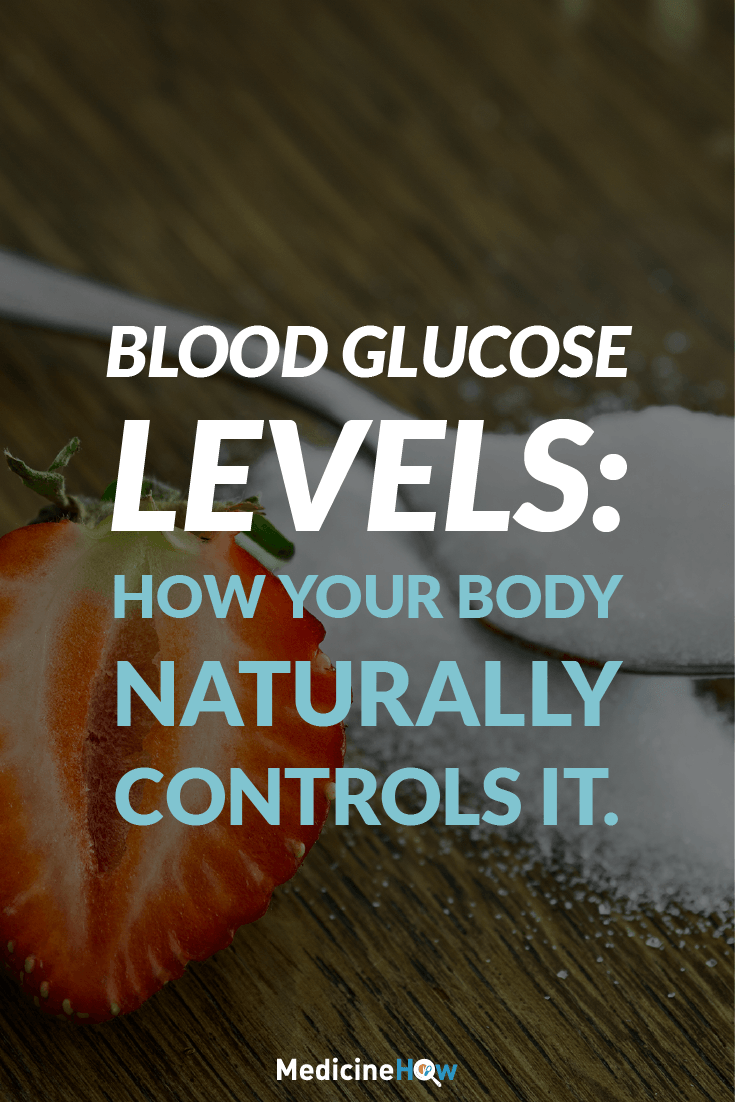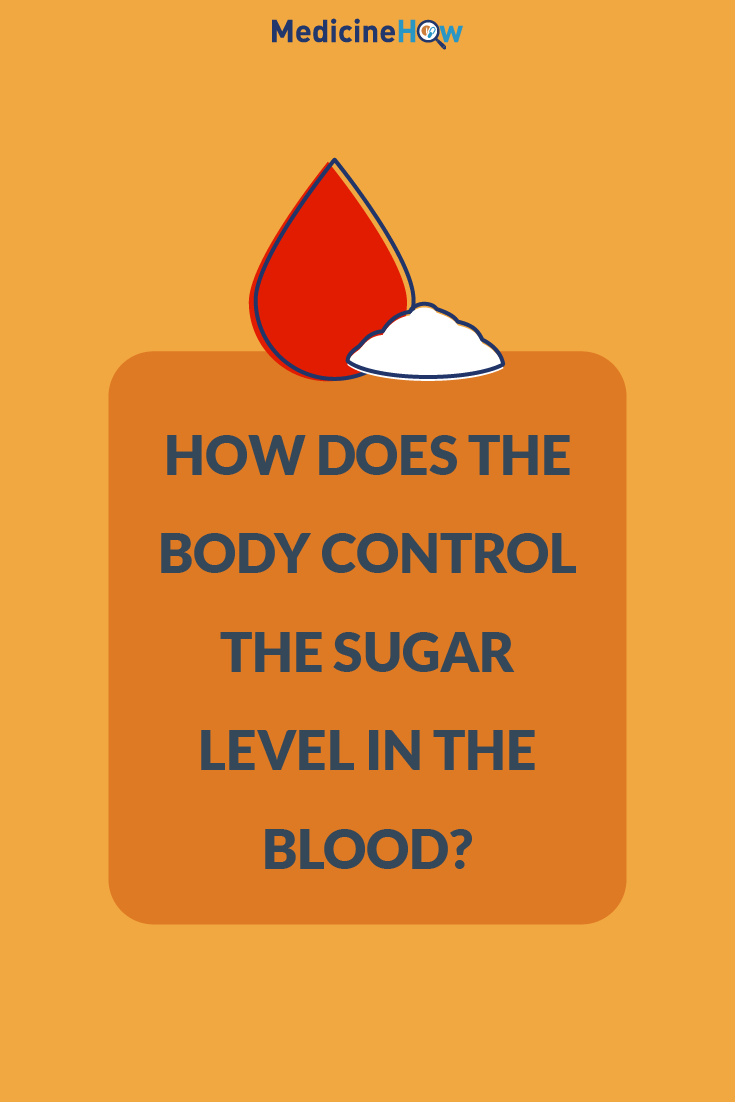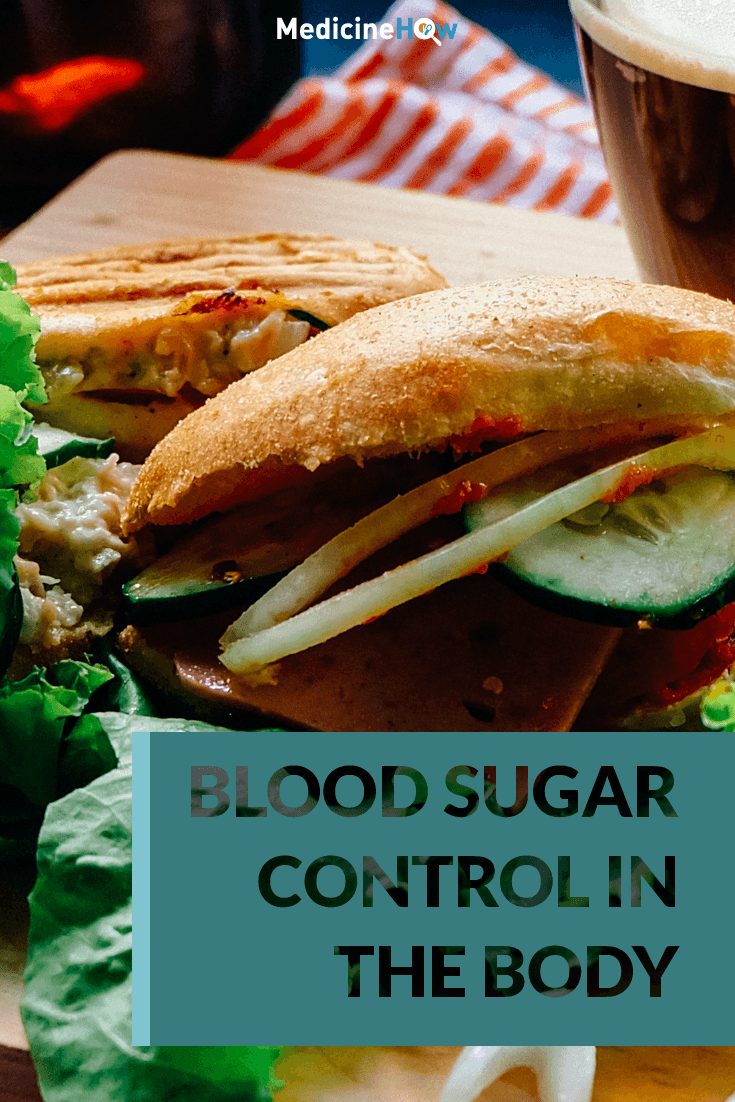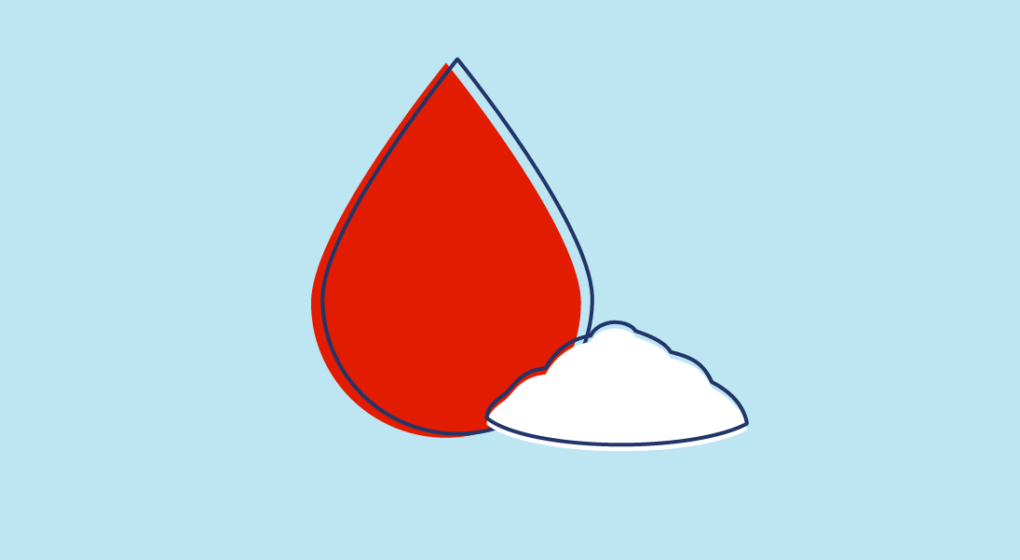
The human body is amazing, particularly when you get into the intricacies of it. Each part of the body is continually being monitored and everything is simultaneously kept in perfect balance. Among others, one of the things the body monitors and keeps balanced is blood sugar control, that is, the amount of glucose in our blood.
Someone with diabetes has problems keeping the glucose balance in the body; it depends on the type of diabetes as to why this is the case. Before we get into any of that, however, we need to be clear on how the body usually controls the blood sugar. It is only once we can comprehend that that we can begin to get into the details of what happens when someone has diabetes.
So let’s get the basics down first.
Glucose in the Body
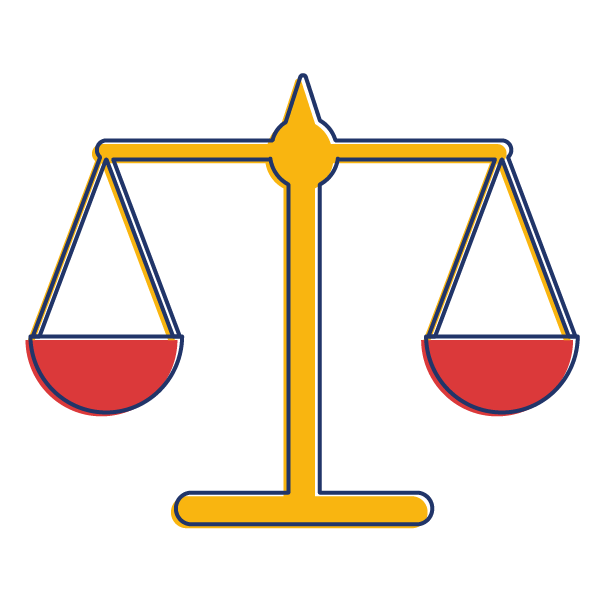 Glucose is absolutely essential for the running of our body, as it provides a source of energy for our muscles and fat cells to draw upon. The body gets its supply of glucose from the food we eat and we then absorb it into the bloodstream, which can transport it around the body to all the different cells where energy may be needed.
Glucose is absolutely essential for the running of our body, as it provides a source of energy for our muscles and fat cells to draw upon. The body gets its supply of glucose from the food we eat and we then absorb it into the bloodstream, which can transport it around the body to all the different cells where energy may be needed.
The amount of glucose in our blood is very important and our body keeps this under tight control. The reason for this is simple; both too much and too little glucose can be detrimental for the body. We’ll go into more detail later on in the series but for now it is enough to appreciate that both can lead to serious outcomes.
It is absolutely normal for the blood glucose levels to vary a little throughout the course of a day. When we’ve just finished eating a meal, the energy from the foods that we absorb causes our blood sugar to rise. The body then recognises this rise and makes adjustments to maintain the balance in the body.
Blood Sugar Control
The body controls our blood sugar using two main organs, the pancreas and the liver.
The pancreas is the middle man; the messenger. It receives word about the current glucose levels in the blood and secretes one of two hormones, insulin or glucagon, as a response. Glucagon is released when the pancreas recognises that the blood sugar levels are too low, whereas insulin is released when there is too much glucose. These then journey off to the liver, where they have opposite effects on the blood sugar levels.
The liver is the action man. Here, glucose can be converted to glycogen (and also the reverse) to control the actual amount of glucose in the blood. Glycogen is simply the stored form of glucose, meaning that it isn’t free to be moving throughout our bloodstream.
The glucagon hormone is needed to release the stored glycogen from the liver and turn it into glucose that can flow through the bloodstream.
Insulin, on the other hand, is needed to turn glucose into glycogen and decrease the blood sugar levels. Insulin also has another effect in that it helps muscles and fat cells to use the glucose as energy (more on this later on in the series).
This diagram may help to understand:
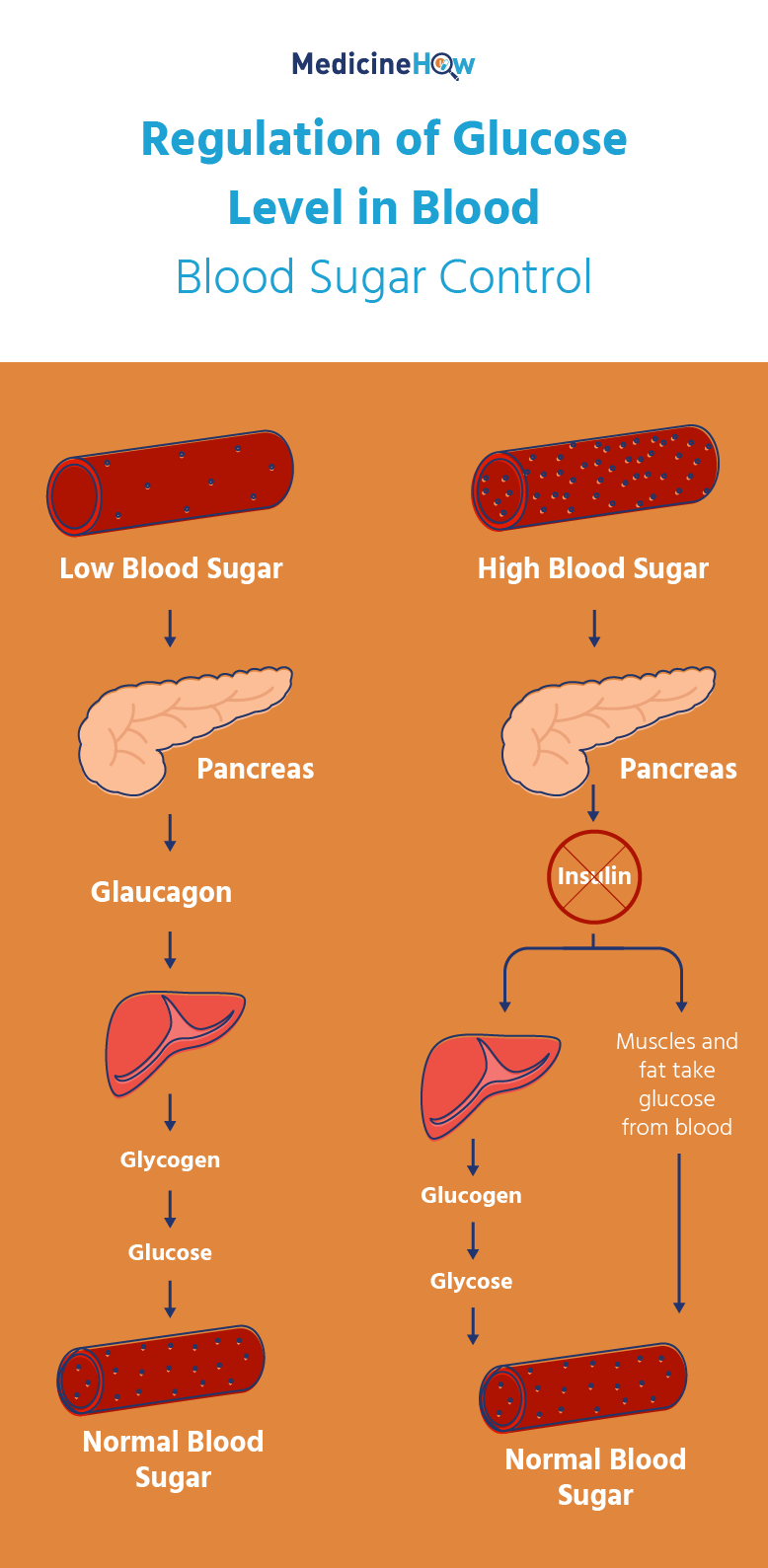
If the blood sugar is low, the pancreas releases glucagon. This helps the liver to turn stored sugar into glucose to increase blood sugar levels back to the normal range.
If the blood sugar is too high, the pancreas releases insulin. This helps the liver to store the excess sugar and the body to use the glucose already in the blood stream for energy.
So with the help of insulin and glucagon, our body can maintain control of the glucose concentration in our blood on an ongoing basis. The problems occur when our body loses control these mechanisms, when the glucose levels in our blood are unregulated, which is where diabetes comes into the equation.
This is the first post in the All About Diabetes series, The next post in the series is called “What is Diabetes?”
Pin it!
